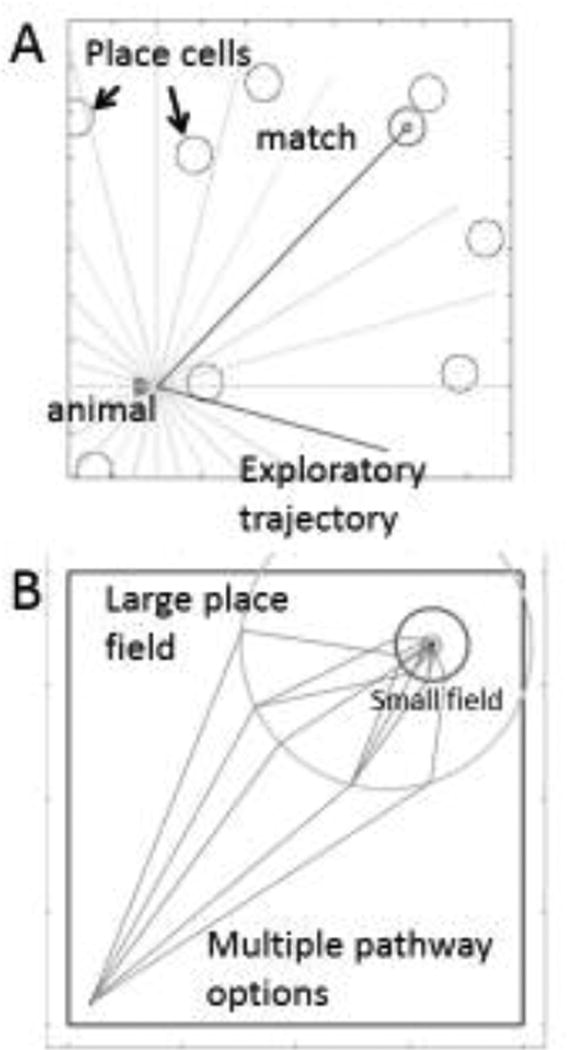Figure 2.
A. Model for goal-directed behavior based on linear forward trajectory planning [68]. Circles represent the location where previous place cell firing took place. Triangle indicates animal location. Light gray lines indicate sequential sampling of forward trajectories through the environment. Darker line ending in circle indicates the trajectory that overlaps with the previously visited place cell firing field that was associated with a goal location, allowing selection of this trajectory. B. Different trajectories obtained by sampling at multiple spatial scales, allowing initial selection of trajectories to the large place cell firing field, followed by selection of trajectories to smaller place cell firing fields.

